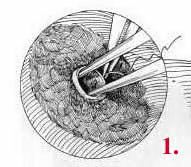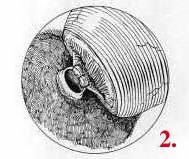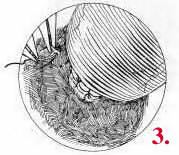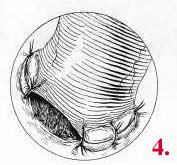Doctors question need for yearly pelvic exams
Healthy adult women don't need Pap smears every year and that time could be spent on other more pressing health matters, a group of doctors reports. Not all healthcare providers agree.
It's an annual rite most women would prefer to skip: a trip to the doctor for a checkup that includes shedding every stitch of clothing, donning a paper gown, placing feet in metal stirrups and enduring a pelvic exam.
For a healthy adult woman, the exam typically doesn't hurt. However it can be uncomfortable, cold, embarrassing, time-consuming and, perhaps, unnecessary.
Some doctors are beginning to question the need for every woman to have the exam every year. One of them is Dr. Carolyn L. Westhoff, a professor of obstetrics and gynecologyat Columbia University. Last month, she and several colleagues wrote in the Journal of Women's Health that the routine pelvic exam is "obsolete" for women who have no symptoms that might suggest a problem. They argued that the time could be better spent on other, more pressing, health matters.
Westhoff notes that pelvic exams are not routinely performed in many European countries. "We have a more aggressive tradition in the West," she said. "It's kind of an American medical culture thing to just do more."
An annual doctor's visit to talk over concerns is "a fine idea," she added. "But a pelvic doesn't have to be part of that encounter."
The article comes about a year after the American College of Obstetricians and Gynecologists released new recommendations relaxing the number of Pap smears women need. For many healthy women, a Pap test every two years from ages 21 to 29 is sufficient, followed by every three years for women ages 30 to 65, according to the college. And Westhoff notes that scientists are working on a vaginal swab test that women can perform themselves and submit to a lab for detection of human papillomavirus, the cause of cervical cancer. Such a test would further reduce the need for Pap tests.
She said there were other reasons to abandon the annual pelvic exam:
• Pelvic exams are also done to screen for sexually transmitted diseases, particularly chlamydia. But there are now reliable self-swab tests that women can use to collect samples to send to a lab.
• Pelvic exams were once routinely performed before a healthcare provider would prescribecontraception. Though this is still needed for a diaphragm or intrauterine device, several health groups specifically state that the exam is not necessary for a woman to receive hormonalcontraceptives.
• A manual examination of the pelvic area, in which the doctor uses two fingers and applies abdominal pressure to feel the uterus and ovaries, has never been proven effective for earlier detection ofovarian cancer.
• The examination can lead sometimes lead to unnecessary tests, such as when the doctor feels a mass on the ovary that, in most cases, is a benign cyst that would disappear on its own.
"If we want to do some of the newer stuff that is helpful, all sorts of prevention services that we should attend do, we have to let go of some old stuff that is unhelpful," Westhoff said.
Not all physicians agree with Westhoff's stance.
Doctors and patients do need to rethink how to best spend their time together, agreed Dr. Lisa Nicholas, an assistant professor of obstetrics and gynecology at the UCLA David Geffen School of Medicine. Doctors and patients today should discuss nutrition, physical activity, complementary and alternative medical practices, substance abuse and mental health issues, she said.
But the pelvic exam, Nicholas added, may still have value beyond the major reasons stated as its goals. During the exam, a doctor will inspect the pelvic area for unusual bumps, lumps and rashes that a woman may not see. On rare occasions, a dangerous type of skin cancer called melanoma may be detected on the genitals.
And she worries that a relaxation in pelvic exam recommendations might lead some women to skip a yearly checkup altogether. "I'm fearful of saying to patients 'You don't need this.' They may interpret that as 'I don't need to see the doctor.'"
Even minor symptoms such as light bleeding, minor discomfort, bloating or abdominal pressure are good reasons for an exam, said Dr. Cheryl Iglesia, chairwoman of the committee on gynecological practice for the American College of Obstetricians and Gynecologists and an associate professor atGeorgetown University School of Medicine.
Westhoff "makes a compelling argument," Iglesia said. "But I think the key is the word 'asymptomatic.' That means someone not having any issues."
Though the American College of Obstetricians and Gynecologists still endorses an annual pelvic exam, it continually reviews its guidelines, Iglesia said. For example, the group formerly recommended that pelvic exams and the Pap test begin three years after initiation of sexual activity or at age 21. The new recommendation is for the first Pap test at age 21.
"We are always looking at data … and we revise policies," Iglesia said. "I would rather spend those 15 minutes with a 15-year-old talking about prevention of STDs."






















